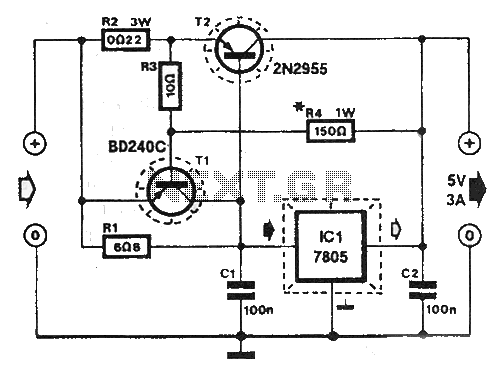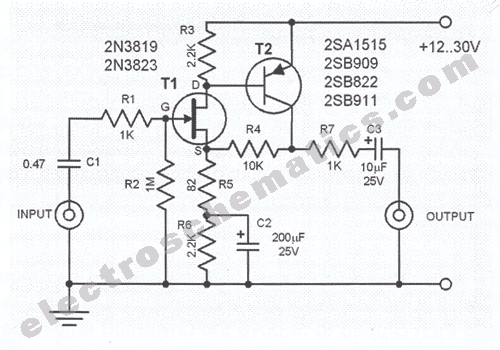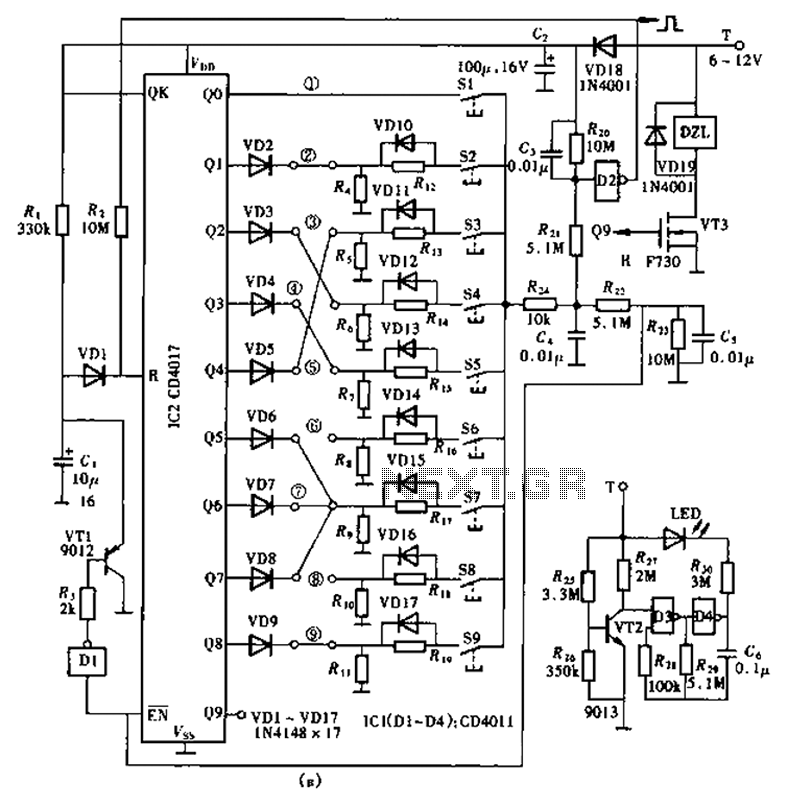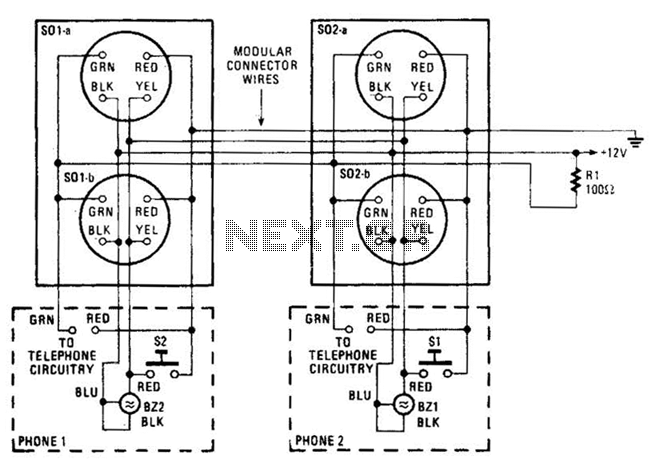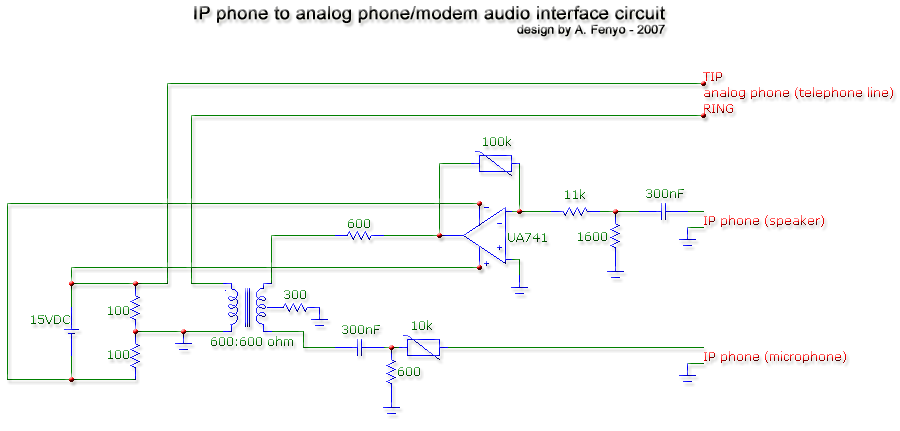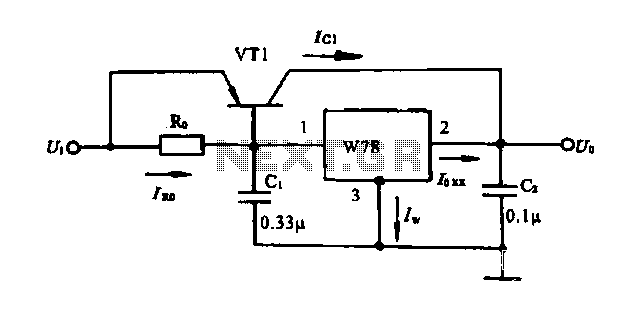
USB powered battery charger circuit
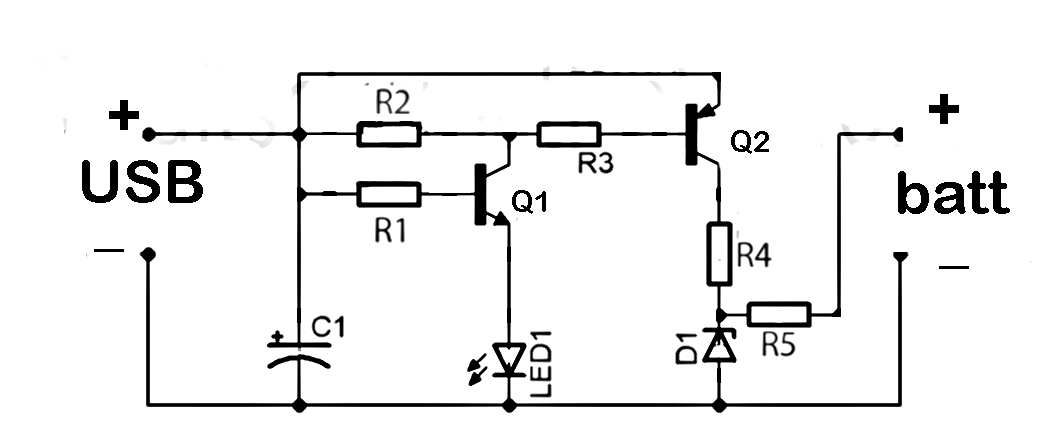
This document discusses the series used in USB connections for charging batteries. The output voltage ranges from 4.7 volts to 5 volts DC, which is suitable for charging mobile phones and other battery types. The circuit described enhances the voltage supplied from the USB port on a computer using various components, resulting in a more powerful and filtered voltage, leading to increased durability and longevity of the battery.
The described circuit operates by taking the standard USB output voltage, which typically ranges from 4.7 to 5 volts DC. This range is ideal for charging lithium-ion batteries commonly used in mobile devices. To enhance the charging efficiency and ensure the battery is charged safely, several key components are integrated into the circuit.
A voltage regulator is employed to maintain a consistent output voltage despite variations in the input voltage from the USB source. This component ensures that the battery receives a stable voltage, which is crucial for preventing overcharging and potential damage to the battery. Additionally, capacitors are used to filter out any noise from the power supply, smoothing the voltage output and further protecting the battery from fluctuations that could affect its performance.
Diodes may also be included in the circuit to prevent reverse current flow, which can occur if the battery discharges back into the charging circuit. This feature is essential for safeguarding the components and ensuring that the charging process is efficient.
Inductors or transformers could be used in more advanced designs to step up the voltage if necessary, depending on the specific requirements of the battery being charged. These components can boost the voltage while maintaining the current within safe limits, ensuring optimal charging conditions.
Overall, the combination of these components not only enhances the charging voltage from the USB source but also ensures that the battery is charged in a manner that maximizes its lifespan and performance, resulting in a more reliable power source for mobile devices. The careful design and selection of components contribute to the overall efficacy and durability of the charging circuit.I will share about the series used in the usb to charge battery. Issued voltage 4. 7 Volt to 5 Volt DC suitable for battery charge the phone, as well as other batteries. Below is a circuit where the voltage is removed the usb on the computer will be strengthened by several components so that the voltage used to charge batteries more po werful and filtered, and will make it more durable and long lasting. 🔗 External reference
The described circuit operates by taking the standard USB output voltage, which typically ranges from 4.7 to 5 volts DC. This range is ideal for charging lithium-ion batteries commonly used in mobile devices. To enhance the charging efficiency and ensure the battery is charged safely, several key components are integrated into the circuit.
A voltage regulator is employed to maintain a consistent output voltage despite variations in the input voltage from the USB source. This component ensures that the battery receives a stable voltage, which is crucial for preventing overcharging and potential damage to the battery. Additionally, capacitors are used to filter out any noise from the power supply, smoothing the voltage output and further protecting the battery from fluctuations that could affect its performance.
Diodes may also be included in the circuit to prevent reverse current flow, which can occur if the battery discharges back into the charging circuit. This feature is essential for safeguarding the components and ensuring that the charging process is efficient.
Inductors or transformers could be used in more advanced designs to step up the voltage if necessary, depending on the specific requirements of the battery being charged. These components can boost the voltage while maintaining the current within safe limits, ensuring optimal charging conditions.
Overall, the combination of these components not only enhances the charging voltage from the USB source but also ensures that the battery is charged in a manner that maximizes its lifespan and performance, resulting in a more reliable power source for mobile devices. The careful design and selection of components contribute to the overall efficacy and durability of the charging circuit.I will share about the series used in the usb to charge battery. Issued voltage 4. 7 Volt to 5 Volt DC suitable for battery charge the phone, as well as other batteries. Below is a circuit where the voltage is removed the usb on the computer will be strengthened by several components so that the voltage used to charge batteries more po werful and filtered, and will make it more durable and long lasting. 🔗 External reference
